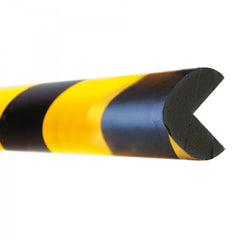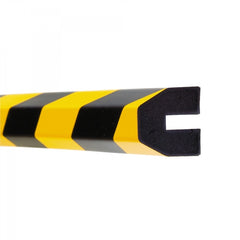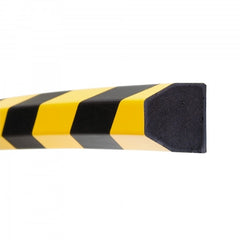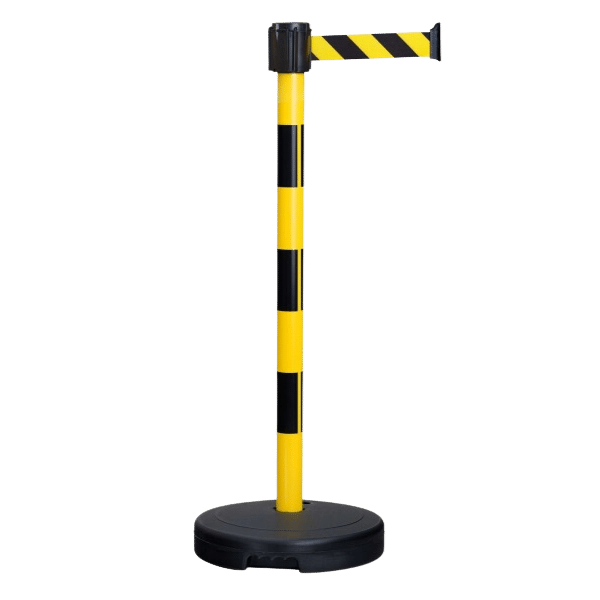Welcome to the comprehensive guide on Foam Impact Protectors, designed to enhance workplace safety in industrial workshops. In this blog post, we will delve into the world of Impact Protection...
Impact Protection Foam Strips
More information about Impact Protection Foam Strips
Shield with the Best: Premium Impact Protection Foam Strips
Our Impact Protection Foam strips are a simple and cost-effective way to protect workers against injuries from light impacts in factories and industrial settings.
The range includes foam impact protector strips in various shapes and sizes, including push-fit versions that easily attach to sharp edges. Circular pipe protectors and flat-bottomed protection strips in rectangle, half-moon and trapeze shapes are also available.
Read our buying guide below to learn more about how Foam Impact Protectors work and choose the best model for your specific needs.
The Functionality of Impact Protection Foam
Foam Impact Protectors, or Impact Protection Foam, are foam materials designed to absorb and distribute impact energy. In manufacturing and industrial settings, they are primarily used to:
- Protect Workers: They can be affixed to sharp or hard corners in warehouses and factories to reduce injury risks.
- Equipment Safety: They safeguard machinery and equipment from potential damage due to collisions or accidents.
- Material Handling: These protectors cushion products during transportation within a facility, preventing damage.
- Storage Areas: Used in shelving or storage areas to protect goods and prevent them from sustaining damage if accidentally dropped or bumped. In such environments, the type of foam selected—like polyurethane or polyethene—depends on the specific protection needs and durability requirements.
Benefits and Uses of Foam Impact Protectors
Foam Impact Protectors provide significant safety and financial benefits. They protect employees from potential accidents, such as head injuries, when working near racking or service ducts. They also protect equipment and surfaces from accidental bumps, saving costs on repairs or replacements.
Foam Impact Protectors can be installed on flat surfaces, corners, and angles, making them ideal for use in docks, loading bays, warehouses, factories, workshops, garages, car parks, and high-traffic areas around construction sites, residences, and workplaces.
Things to Consider
- Safety Standards: Check if the foam impact protectors meet the necessary safety standards, such as BS EN 1176 for playground equipment or BS EN 14960 for inflatable play equipment. Ensuring compliance with these standards is crucial to guarantee the safety of users.
- Density and Thickness: Consider the density and thickness of the foam used in the impact protectors. Higher-density foam generally offers better impact absorption and durability. Thicker foam can provide additional protection against falls and impacts.
- Fire Resistance: Verify if the foam impact protectors have been treated with fire-resistant chemicals or if they meet the required fire safety regulations. This is particularly important for indoor installations or areas with high fire risk.
- UV Resistance: If the foam impact protectors are exposed to sunlight or outdoor conditions, check if they have UV-resistant properties. UV resistance helps prevent the foam's fading, degradation, and deterioration over time.
- Ease of Installation: Consider how easy it is to install or set up the foam impact protectors. Look for options with clear installation instructions or professional installation services if needed.
- Maintenance Requirements: Evaluate the maintenance requirements of the foam impact protectors. Determine if they need regular cleaning, repairs, or replacements. Choosing low-maintenance options can save time and effort in the long run.
- Compatibility: Ensure that the foam impact protectors are compatible with the specific equipment or area where they will be used. Consider factors such as size, shape, and attachment methods to ensure a proper fit and maximum protection.
- Durability and Longevity: Assess the durability and expected lifespan of the foam impact protectors. Look for options that are resistant to wear, tear, and weather conditions. Long-lasting foam impact protectors will provide better value for money in the long term.
Frequently Asked Questions
What is a foam protector?
A foam protector is a highly effective and versatile product designed to provide superior impact protection for various items. Made from high-density foam, these protectors are lightweight yet durable, making them ideal for safeguarding delicate and valuable objects during transportation or storage.
Foam protectors are commonly used in industries such as electronics, furniture, and automotive, as they offer excellent shock absorption and cushioning properties. Whether you need to protect fragile glassware, sensitive electronic devices, or even furniture corners, foam protectors are an essential solution to prevent damage and ensure the safe arrival of your items.
With their easy-to-use and customizable design, foam protectors provide a reliable and cost-effective solution for protecting your valuables.
What are the benefits of foam Impact protectors?
Foam impact protectors offer several benefits, including:
- Shock absorption: Foam materials are designed to absorb and disperse impact energy, reducing the force transmitted to the protected object or body part. This helps to minimise the risk of injury during accidents, falls, or collisions.
- Cushioning: Foam impact protectors provide a soft and cushioned surface, enhancing comfort and reducing discomfort or pain caused by pressure points or repetitive impacts.
- Lightweight: Foam materials are generally lightweight, making them easy to wear or attach to various objects without adding significant weight or bulk. This is particularly important for applications where mobility and flexibility are crucial, such as in sports or industrial settings.
- Versatility: Foam impact protectors can be moulded or shaped into various forms, making them versatile for different applications. They can be customized to fit specific body parts, equipment, or objects, ensuring optimal protection and coverage.
- Durable: Foam materials are often durable and long-lasting, capable of withstanding repeated impacts or compressions without losing their protective properties. This makes them suitable for prolonged use in demanding environments.
- Cost-effective: Foam impact protectors are generally more affordable than other protective materials, such as rigid plastics or metals. This makes them cost-effective for individuals or organisations seeking reliable impact protection without breaking the bank.
Overall, foam impact protectors offer a combination of impact absorption, cushioning, versatility, and cost-effectiveness, making them a popular choice for various applications, including sports, industrial safety, automotive, and consumer products.
Where can Impact foam protectors be used?
Impact foam protectors can be used in various applications, including:
1. Sports: They are commonly used in sports such as football, hockey, and rugby to protect players from impacts and reduce the risk of injuries.
2. Industrial settings: Impact foam protectors are used in industrial environments to provide cushioning and worker protection. They can be found in construction sites, manufacturing plants, and warehouses.
3. Automotive industry: They are used in vehicles to protect occupants during collisions. Impact foam protectors can be found in car seats, headrests, and door panels.
4. Medical field: They are used in medical equipment and devices to provide cushioning and protection. Impact foam protectors can be found in hospital beds, wheelchairs, and prosthetic limbs.
5. Electronics: They are used to protect sensitive electronic components from shocks and vibrations. Impact foam protectors can be found in computers, smartphones, and other electronic devices.
6. Furniture: They are used in furniture to provide comfort and protection. Impact foam protectors can be found in mattresses, sofas, and chairs.
7. Packaging: They are used in packaging materials to protect fragile items during shipping and transportation. Impact foam protectors can be found in packaging foam, bubble wrap, and foam inserts.
These are just a few examples and impact foam protectors can be used in many other applications where impact protection is required.
First Mats Choice
-
 Self-Adhesive Foam Edge Protectors - 1m Long
Self-Adhesive Foam Edge Protectors - 1m Long

["UV - fire & temperature resistant","CFC and silicone free","Sizes from 30mm - 60mm"]
1 to 2 working days £29.40 Excl. VAT £34.20 Excl. VAT -
 Push-Fit Profile Foam Impact Protectors - 1m Long
Push-Fit Profile Foam Impact Protectors - 1m Long

["1 meter long strips","UV - solvent - temperature and fire resistant","Four different profiles available"]
1 to 2 working days £29.30 Excl. VAT £34.10 Excl. VAT -
 Self-Adhesive Foam Surface Protector Strips - 1m Long
Self-Adhesive Foam Surface Protector Strips - 1m Long

["UV and temperature resistant","CFC and silicone free","Three different shapes"]
1 to 2 working days £30.60 Excl. VAT £35.60 Excl. VAT













